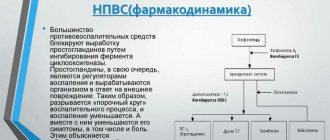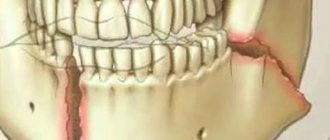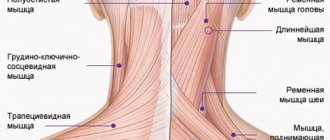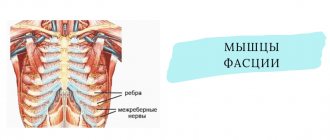1.General information
The word “neuralgia” is one of those terms that are constantly heard even outside of medicine: you can hear about neuralgia from employees in the office, or from all-knowing grandmothers at the entrance, or from a neurologist, to whom we were eventually redirected “according to our profile.” “, although initially we complained of pain in the heart. In general, neuralgia is a fairly common phenomenon, and in everyday speech it is most often used and perceived as a diagnosis, i.e. as the name of a disease.
The concepts of “neuralgia” and “neuritis” are often confused (the first indicates a tangible manifestation in the form of pain; in the second word, the suffix “-itis” identifies the inflammatory process). Many sources emphasize that neuralgia is only a symptom, a consequence of some mechanical causes and/or organic, pathomorphological changes that have their own logic and dynamics. However, in the International Classification of Diseases (ICD), the independent nosological code “neuralgia” is found in three categories at once, incl. with the definitions “unspecified” and “not elsewhere classified”. Finally, a distinction is made between secondary (symptomatic) neuralgia, which develops as part of a clearly diagnosed disease, and primary (essential), in which a more general, basic pathology cannot be identified - which, however, does not mean its absence.
Despite all the discrepancies, the phenomenon of neuralgia itself has been known for a very long time and has been fairly well studied. As the literal translation from Latin defines, it is “nerve pain”, i.e. pain on any part of the conducting nerve, usually located in a narrow canal. The localization can theoretically be anything, but in practice some options - intercostal neuralgia, neuralgia of the trigeminal, occipital, femoral cutaneous, sciatic nerves - are more common than others. Thus, according to statistics, over a million people suffer from neuralgia of the trigeminal facial nerve and its branches alone.
A must read! Help with treatment and hospitalization!
Diagnostics
Intercostal neuralgia can be a symptom of many diseases - from cardiovascular pathologies to diseases of the internal organs of the abdominal cavity and chest. It is impossible to independently determine the cause only from existing complaints. A consultation with a neurologist and a comprehensive diagnosis is necessary to ensure that there are no diseases of the heart, lungs, or digestive system.
Particular attention is paid when diagnosing and treating intercostal neuralgia on the left side. Acute pain in the heart may be a sign of a heart attack. Symptoms usually differ - for example, with heart problems, cold sweat appears and shortness of breath bothers you, the pain does not decrease with rest when the muscles relax. But making a diagnosis based only on symptoms is wrong. The doctor is responsible for the life and health of the patient, which means he needs confidence in the diagnosis and correctness of treatment.
The procedure for examining a patient with suspected intercostal neuralgia is as follows:
- Questioning the patient about complaints and the characteristics of their occurrence.
- Examination to find the location of the pain.
- Setting up a preliminary diagnosis.
- Carrying out examinations to confirm intercostal neuralgia, its causes and prescribe the treatment that will be required in a particular case.
The following diagnostic methods can be used:
- Magnetic resonance imaging or computed tomography is a study that will provide detailed and highly accurate images of tissues and pathology in them.
- ECG – monitoring of heart function to exclude cardiovascular diseases.
- Ultrasound of the heart or other internal organs, diseases in which may have similar symptoms.
- X-ray of the lungs to exclude pneumonia, pleurisy and other diseases in which there are complaints of chest pain.
Diagnostic methods are selected individually depending on the nature of the pain and its location, and the patient’s condition. In some cases, other specialists are involved in diagnosis and treatment - a cardiologist, gastroenterologist, pulmonologist.
2. Reasons
The etiology of neuralgia is very diverse. Often there is mechanical compression of the nerve (compression, compression) in the bone canal or outside it, occurring as a result of injuries, osteochondrosis, calcification, tumor growth, muscle hypertonicity, etc. A large group of neuralgia is associated with certain diseases of the nervous system itself, as well as with general inflammatory processes, incl. infectious, and above all viral (ARVI, influenza, etc.). In this regard, especially noteworthy is the persistent pain syndrome in herpes zoster, when intense pain persists for a long time after the active, skin phase of the disease.
Direct risk factors also include sudden and deep hypothermia (especially local), intoxication with heavy metals, products of drug metabolism, etc.
Visit our Neurology page
Intercostal neuralgia
This is a pain syndrome caused by damage to the peripheral nerves of the chest. Appears due to inflammation, irritation or pinching of the nerve roots in the intercostal space. Intercostal neuralgia is not a disease - it is a syndrome that can appear against the background of various pathologies. Vertebrogenic thoracalgia (as intercostal neuralgia is called) is a general concept that refers to pain that occurs in the chest area. They can appear for no particular reason, or can serve as a sign of various diseases.
Symptoms may resemble pain from a heart attack, pneumonia or pleurisy, diseases such as pancreatitis and others. A characteristic symptom is an increase in pain when coughing, laughing, moving, bending the body and decreasing at rest and with muscle relaxation. This is a distinctive feature of intercostal neuralgia, which allows it to be differentiated from symptoms of heart disease or other pathologies. But you shouldn’t take risks and try to diagnose yourself. The cost of a mistake can be higher than the prolonged pain syndrome.
The principles of treatment and symptoms of intercostal neuralgia in men and women are similar. The main manifestation is pain:
- Paroxysmal, occurring on its own.
- Monotonous, aching.
- Intensified by movement, deep breathing and exhalation, laughter, coughing.
- Occurs when pressing on individual points on the front of the chest or side.
- A burning sensation in the area where the nerve is damaged.
- Numbness, “pins and needles” sensation.
The pathology is more common on the left side of the body, and in women, intercostal neuralgia is a fairly common companion to pregnancy. During this period, the growing fetus puts pressure on the organs in the abdominal cavity, which can lead to pinched nerves.
3. Symptoms and diagnosis
Neuralgia (here we note that the often used expression “pain with neuralgia” is tautological, since “neuralgia”, by definition, is pain) varies widely both in nature and intensity. This can be almost constant, aching, “dull” pain, but more common is acute, sharp, paroxysmal neuralgia, which is described by almost all patients as an electric shock along the nerve. This specific type of pain is extremely unpleasant and, I think, is familiar to everyone who has at least once suffered from pulpitis or hit his elbow quite accurately. In many cases, neuralgia, depending on which nerve is affected, is accompanied by a local reaction (hyperemia, muscle spasms, swelling, facial tics, reflex lacrimation, etc.), disturbances in skin sensitivity, limitations in mobility, headaches, irradiation into the adjacent areas. In general, neuralgia is usually described as a painful, debilitating, and in some cases literally unbearable condition.
Ascertaining neuralgia as such does not present any difficulties for a specialist. Another thing is the clarifying and differential diagnosis of the root causes, concomitant and background diseases, which may require a serious examination using, as necessary, modern instrumental methods: MRI and CT, ultrasound, electroneurography, as well as laboratory tests (in particular, for antibodies to the herpes virus ).
About our clinic Chistye Prudy metro station Medintercom page!
Symptoms of intercostal neuralgia or heart pain - how to distinguish?
No. The most common cause of chest pain is pinched intercostal nerves in the intercostal space or muscle pain. Heart pain is much less common. It's easy to distinguish:
- Neuralgia or muscle pain increases with deep inhalation or exhalation, changes from a change in position or movement in the chest; as a rule, it can be felt;
- Heart pain does not change with deep inspiration or exhalation, or with changes in position or movement in the chest; usually relieved with nitroglycerin; may be accompanied by irregular pulse rhythm, a drop or increase in blood pressure.
4.Treatment
In most cases, primary therapy is conservative and brings sufficient effect. Modern analgesics and anti-inflammatory ointments with analgesic effects are widely and successfully used. There are often direct indications for prescribing vitamin complexes, and this “banal” prescription should under no circumstances be ignored (as, indeed, any other doctor’s prescription). In more complex clinical situations, novocaine blockades are prescribed. Drug treatment of persistent and intense pain syndrome with herpes zoster and some forms of trigeminal neuralgia, as a rule, requires long-term regular use of antiparoxysmal (anticonvulsant, antiepileptic) drugs; No matter how unexpected such a prescription may seem, in these cases it is the only way to control residual neuralgia until its gradual complete reduction.
Treatment of the underlying disease (if it is identified) and sanitation of all foci of infection are mandatory.
Separately, it should be said about physiotherapy, which often plays a key role in the treatment of neuralgia. Today, many “old, proven” and new highly effective methods are known: ultrasound therapy, drug electrophoresis, laser therapy, acupuncture and many others.
Finally, in the absence of satisfactory results from all prescribed types and modes of treatment, as well as in obviously “non-conservative” situations - acute, severe, advanced - surgical intervention is prescribed. Many specific techniques in this regard have also been developed (some of them are aimed at suppressing or removing the nerve, some at releasing it from a mechanical “trap”), and they are successfully used in modern specialized clinics.
Muscle pain in the chest: treatment
Chest pain can be caused not only by compression/irritation of the intercostal nerves, but also by excessive tone of one or more muscles. Usually these muscles are the extensors of the back or the muscles of the shoulder and scapula. Muscle pain is characterized by an increase in pain when the affected muscle is stretched (bending forward, moving the shoulder or shoulder blade). Muscle pain is successfully treated. The goal of treatment is to restore the correct tone-strength balance of the chest muscles. Our clinic successfully uses manual therapy and therapeutic exercises, which patients perform independently at home.
Sometimes muscle pain in the chest is one of the symptoms of anxiety or depression. Extensor muscle tension is one of the characteristic symptoms of these conditions. And in this case, manual therapy, gymnastics and blockades provide only temporary relief. In our clinic, such pain is successfully treated with psychotherapy.









